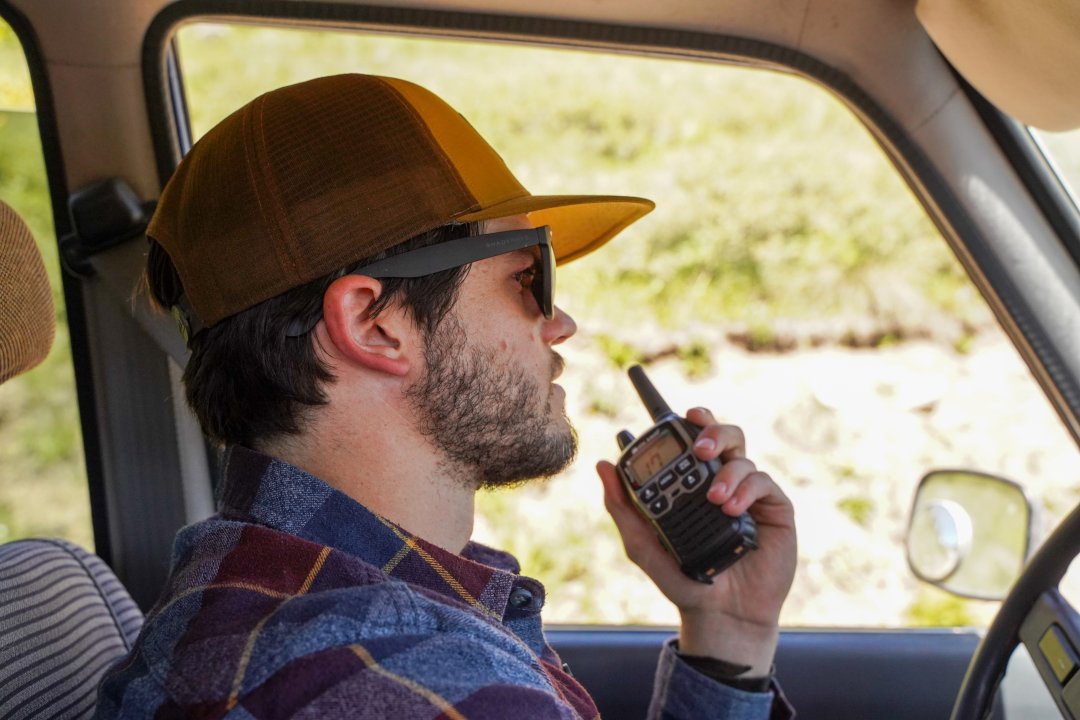There is more to walkie-talkie talk than the mere pressing of a button to say something, and this is a skill which involves knowing when it is appropriate to do so. Knowing proper buttons or the right gadget is not the only thing needed to perform this task. Mastery of this skill results in significant improvements in communication in the workplace. Whether using the newest device like the Rapid Radios Nationwide PTT Walkie-Talkie or old-fashioned two-way radio, communication becomes much more efficient once you master the walkie-talkie fundamentals.
The Fundamentals of Clear Walkie-Talkie Talk
Agreed, the Push to Talk order
The walkie talkie talk is initiated by pushing down the press-to-talk button. While this is true, there’s a right way to do it. Consider the Rapid Radios Nationwide PTT, which has another feature that epitomizes mobile robustness, “INSTANT Communication – No Delay, No Lag”, and improper button discipline becomes an even more significant issue:
Ensure you press completely before talking to avoid self-clipping the beginning of the word that you are about to utter
Keep talking with no interruptions during the transmission so there are no gaps. After that, let go of the release button to allow others to redo everything.
Clarity Through Proper Speech Patterns
Successful walkie-talkie talk demands adjustment to everyday speaking habits. Unlike phone conversations, walkie-talkies don’t allow simultaneous two-way communication, requiring a more structured approach:
- Speak at a moderate pace, slightly slower than normal conversation
- Maintain consistent volume without shouting (which distorts audio)
- Articulate clearly, especially numbers and critical information
- Pause briefly between key points to ensure comprehension
- Position the microphone 2-3 inches from your mouth for optimal audio clarity
Structured Communication Protocols
Organized walkie-talkie talk follows established patterns that minimize confusion and maximize efficiency, particularly in group settings where the Rapid Radios can support “Group Talking – Up to 200 People.”
The Call-Response Pattern
The foundation of professional walkie-talkie talk is the call-response pattern, which establishes clear communication channels:
- Begin with the recipient’s identifier followed by your own (“Team Two, this is Base”)
- Wait for acknowledgement before delivering your complete message
- Confirm understanding after delivering critical information
- Close the exchange with a precise ending phrase
Time-Proven Terminology
Specific standardized terms have explicitly evolved for walkie-talkie talk because they reduce misunderstanding:
- “Copy” or “Received” – Confirms a message was heard and understood
- “Stand by” – Indicates a pause in communication is needed
- “Go ahead” – Signals the other party should proceed with their message
- “Over” – Indicates you’ve finished speaking and expect a response
- “Out” – Signals the end of the complete exchange
- “Say again” – Requests repetition (preferable to “repeat,” which has other meanings in some contexts)
Advanced Walkie-Talkie Talk Techniques
For users of sophisticated systems like the Rapid Radios Nationwide PTT, which features both “1 on 1 Private Talking” and “Group Talking,” mastering advanced communication methods becomes increasingly valuable.
Emergency Communication Protocols
During emergencies, walkie-talkie talk must follow heightened protocols:
- Begin urgent messages with “Emergency” or “Priority” to signal importance
- Maintain absolute channel discipline during emergency communications
- Speak with increased clarity and deliberate pacing
- Repeat critical information like locations or medical details
- Acknowledge emergency messages immediately, even if only to confirm receipt
Walkie-Talkie Talk in Family and Recreational Settings
With easy-to-use systems like the Rapid Radios designed to be “EASY to Use – Even for Kids and the Elderly,” walkie-talkie talk extends beyond professional applications into family and recreational use.
Family Communication Guidelines
For family use of walkie-talkie talk, establishing simplified protocols improves effectiveness:
- Create simple call signs or identifiers for family members
- Establish essential keywords for everyday situations
- Practice communication patterns during non-emergency times
- Set clear expectations for response acknowledgement
Outdoor Activity Applications
When using walkie-talkie talk during outdoor adventures, consider these specialized techniques:
- Establish regular check-in intervals when group members are separated
- Use specific location descriptions rather than relative terms (“at the oak tree” vs “over here”)
- Confirm receipt of critical safety information with verbal readback
- Position the radio antenna vertically when possible to maximize signal strength
Technical Considerations for Optimal Walkie-Talkie-Talk
The technical aspects of your radio system significantly impact walkie-talkie-talk effectiveness. The Rapid Radios Nationwide PTT offers several advantages in this regard:
- “Unlimited Distance” capabilities eliminate traditional range concerns when within LTE coverage
- “5-DAY Battery Life” ensures communication remains possible throughout extended activities
- “NO Programming, Setup or Configuration” removes technical barriers to effective communication
- Support for both private and group communications provides flexibility for different situations
Developing Walkie-Talkie-Talk Mastery
By investing time to master proper walkie-talkie talk protocols and techniques, you’ll maximize the utility of advanced communication tools like the Rapid Radios Nationwide PTT Walkie-Talkie, ensuring clear, efficient communication whether for emergency preparedness, professional applications, or family adventures.









